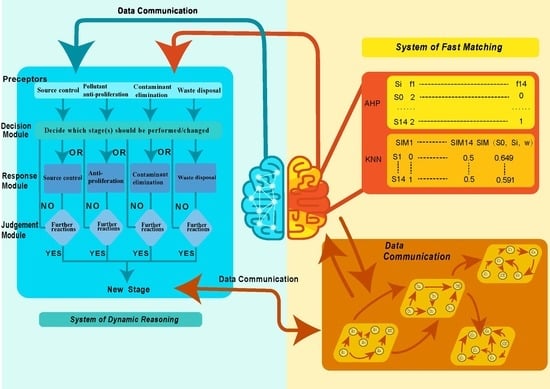A Brain-Inspired Dynamic Environmental Emergency Response Framework for Sudden Water Pollution Accidents
Abstract
:Highlights
- A brain-inspired dynamic environmental emergency response framework for sudden water pollution accidents was built.
- The whole process of dynamic reasoning besides the fast matching of cases like a human was realized, while not being distorted by human feelings.
- The standards, methods, and algorithms of the framework were given based on big data analysis of historical pollution cases.
- The feasibility and robustness of the framework was tested through the biggest tailings pond leakage accident in China in 20 years.
1. Introduction
1.1. Sudden Water Pollution Accidents in China
1.2. Previous Studies on Environmental Emergency Response
1.3. Emergency Response Framework in China and Other Countries
1.4. Brain-Inspired Studies
2. Mechanism of Our Brain-Inspired Multi-Stage Dynamic Environmental Emergency Response System
2.1. Study Area
2.2. Basic Architecture of the Brain-Inspired System
2.3. Multi-Stage Theory of Emergency Response to Sudden Water Pollution
2.4. Fast Matching Method of Previous Cases
2.5. Iterative Generation Scheme of Dynamic Programming Reasoning
3. Building the Environmental Emergency Response System
4. Case Study
4.1. Fast Matching of Historical Event
4.1.1. Using the AHP Method to Determine Factor Weights
4.1.2. Numerate the Indexes
4.1.3. KNN with Weights
4.2. Dynamic Programming Iteration Process of the Whole Event
4.3. Results
5. Conclusions and Suggestions
- Big data analysis based on historical cases of sudden water environmental pollution. This paper innovatively simulates the human brain cognitive system and realizes an emergency response framework that has the thinking advantage of human decisionmakers while not being affected by nervous emotions.
- For the quick response module, the machine learning method KNN, which does not require pretraining, is used to carry out the fast matching of cases, to optimize the waiting time for model training, and to give possible solutions as quickly as possible.
- The water pollution incident response module is divided into four stages, and the decision index for each module is given to assist the logical decisions.
- The most important point, the dynamic iterative process, is implemented in the decision support framework for the first time. This study complements the shortcomings of previous studies that explained the dynamic process but did not provide the corresponding solutions.
Supplementary Materials
Author Contributions
Funding
Institutional Review Board Statement
Informed Consent Statement
Conflicts of Interest
References
- Jin, A.F.; Li, G.H.; Zhang, X. The Risk Source Identification and Classification Methodology of Groundwater Pollution. Earth Sci. China Univ. Geosci. 2012, 37, 247–252. [Google Scholar] [CrossRef]
- Hu, M.; Qiu, R.; Wu, D.; Management, H.S.-T. Undefined Hierarchical Pattern Recognition for Tourism Demand Forecasting; Tourism Management: Amsterdam, The Netherlands, 2021. [Google Scholar]
- Li, D.; Shi, L.; Dong, Z.; Liu, J.; Xu, W. Risk analysis of sudden water pollution in a plain river network system based on fuzzy-stochastic methods. Stoch. Environ. Res. Risk Assess. 2019, 33, 359–374. [Google Scholar] [CrossRef]
- Penman, T.D.; Cirulis, B.; Marcot, B.G. Bayesian decision network modeling for environmental risk management: A wildfire case study. J. Environ. Manag. 2020, 270, 110735. [Google Scholar] [CrossRef] [PubMed]
- Zhang, X.; Chen, C. Emergency drinking water treatment in source water pollution incident-technology and practice in China. Front. Environ. Sci. Eng. China 2009, 3, 364–368. [Google Scholar] [CrossRef]
- Zhang, X.J.; Chen, C.; Lin, P.F.; Hou, A.X.; Niu, Z.B.; Wang, J. Emergency drinking water treatment during source water pollution accidents in China: Origin analysis, framework and technologies. Environ. Sci. Technol. 2011, 45, 161–167. [Google Scholar] [CrossRef] [PubMed]
- Shi, S.; Cao, J.; Feng, L.; Liang, W.; Zhang, L. Construction of a technique plan repository and evaluation system based on AHP group decision-making for emergency treatment and disposal in chemical pollution accidents. J. Hazard. Mater. 2014, 276, 200–206. [Google Scholar] [CrossRef] [PubMed]
- Environmental Emergency Response|UNEP-UN Environment Programme. Available online: https://www.unenvironment.org/explore-topics/disasters-conflicts/what-we-do/preparedness-and-response/environmental-emergency (accessed on 30 December 2020).
- The Flash Environmental Assessment Tool (FEAT) 2.0-EECentre. Available online: https://www.eecentre.org/resources/feat/ (accessed on 30 December 2020).
- The Bahamas: Rapid Assessment of Acute Environmental Risks after Hurricane Dorian-EECentre. Available online: https://www.eecentre.org/2019/11/22/the-bahamas-rapid-assessment-of-acute-environmental-risks-after-hurricane-dorian/ (accessed on 30 December 2020).
- Lu, X.; Han, Z. Emergency management in China: Towards a comprehensive model? J. Risk Res. 2019, 22, 1425–1442. [Google Scholar] [CrossRef]
- Fu, G.; Wang, J.; Yan, M. Anatomy of Tianjin Port fire and explosion: Process and causes. Process Saf. Prog. 2016, 35, 216–220. [Google Scholar] [CrossRef]
- Song, S.; Chu, J.; Zhang, H. Study on Environmental Risk Assessment and Control Countermeasures of Tailings pond in a Mountainous Area of North China. IOP Conf. Ser. Earth Environ. Sci. 2020, 585, 012095. [Google Scholar] [CrossRef]
- Wang, D.; Wan, K.; Ma, W. Emergency decision-making model of environmental emergencies based on case-based reasoning method. J. Environ. Manag. 2020, 262, 110382. [Google Scholar] [CrossRef] [PubMed]
- Kerstholt, J.H. The effect of time pressure on decision-making behaviour in a dynamic task environment. Acta Psychol. (Amst.) 1994, 86, 89–104. [Google Scholar] [CrossRef]
- Zhang, Y.; Qu, P.; Ji, Y.; Zhang, W.; Gao, G.; Wang, G.; Song, S.; Li, G.; Chen, W.; Zheng, W.; et al. A system hierarchy for brain-inspired computing. Nature 2020, 586, 378–384. [Google Scholar] [CrossRef] [PubMed]
- Zou, Z.; Zhao, R.; Wu, Y.; Yang, Z.; Tian, L.; Wu, S.; Wang, G.; Yu, Y.; Zhao, Q.; Chen, M.; et al. A hybrid and scalable brain-inspired robotic platform. Sci. Rep. 2020, 10, 1–13. [Google Scholar] [CrossRef] [PubMed]
- Antonik, P.; Marsal, N.; Brunner, D.; Rontani, D. Human action recognition with a large-scale brain-inspired photonic computer. arXiv 2020, 1. [Google Scholar] [CrossRef] [Green Version]
- Evans, J.S.B.T. Dual-Processing Accounts of Reasoning, Judgment, and Social Cognition. Annu. Rev. Psychol. 2008, 59, 255–278. [Google Scholar] [CrossRef] [PubMed] [Green Version]
- Markram, H. The Human Brain Project. Sci. Am. 2012, 306, 50–55. [Google Scholar] [CrossRef] [PubMed]
- Zhang, M.L.; Zhou, Z.H. ML-KNN: A lazy learning approach to multi-label learning. Pattern Recognit. 2007, 40, 2038–2048. [Google Scholar] [CrossRef] [Green Version]
- Chang, D.Y. Applications of the extent analysis method on fuzzy AHP. Eur. J. Oper. Res. 1996, 95, 649–655. [Google Scholar] [CrossRef]
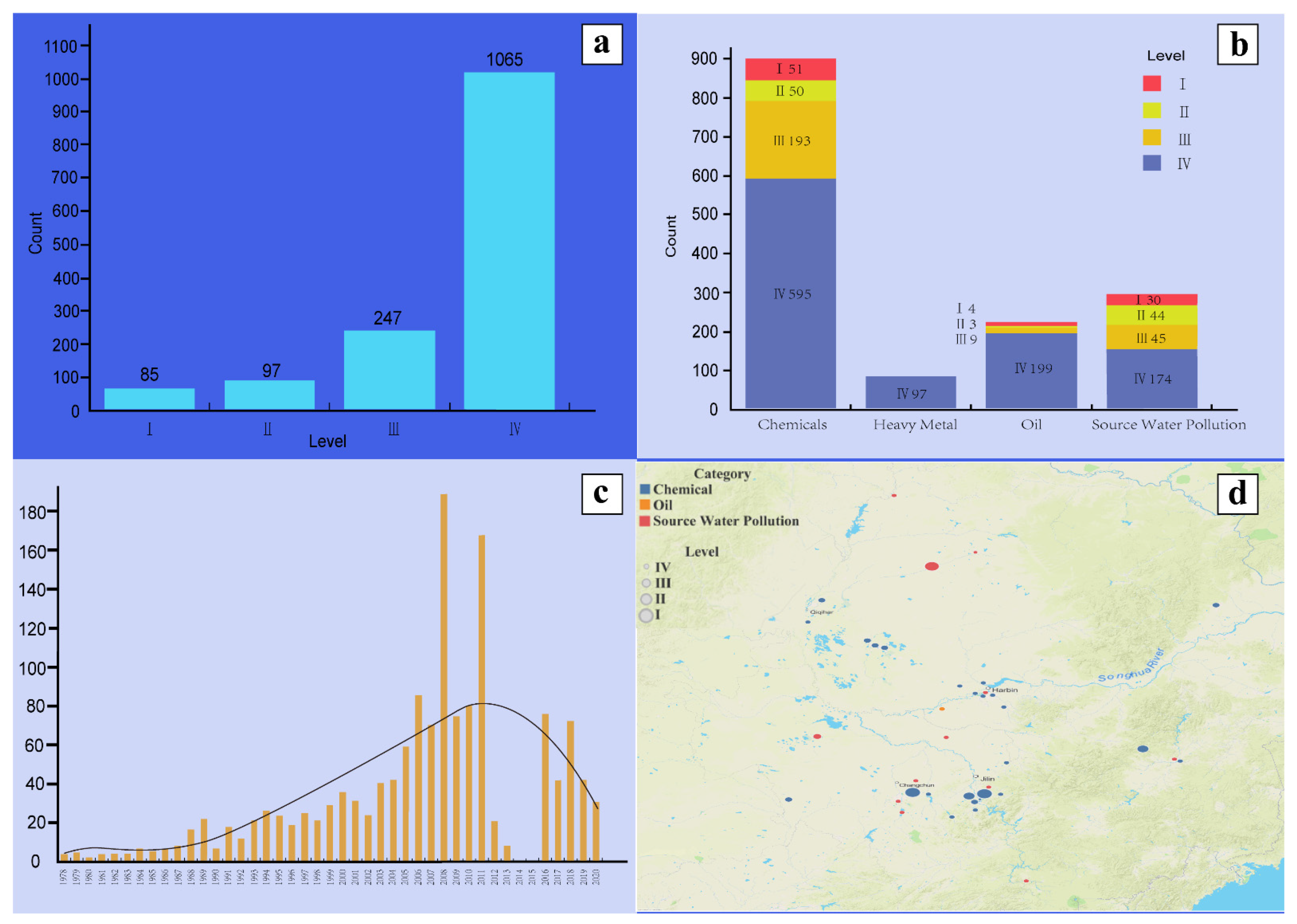
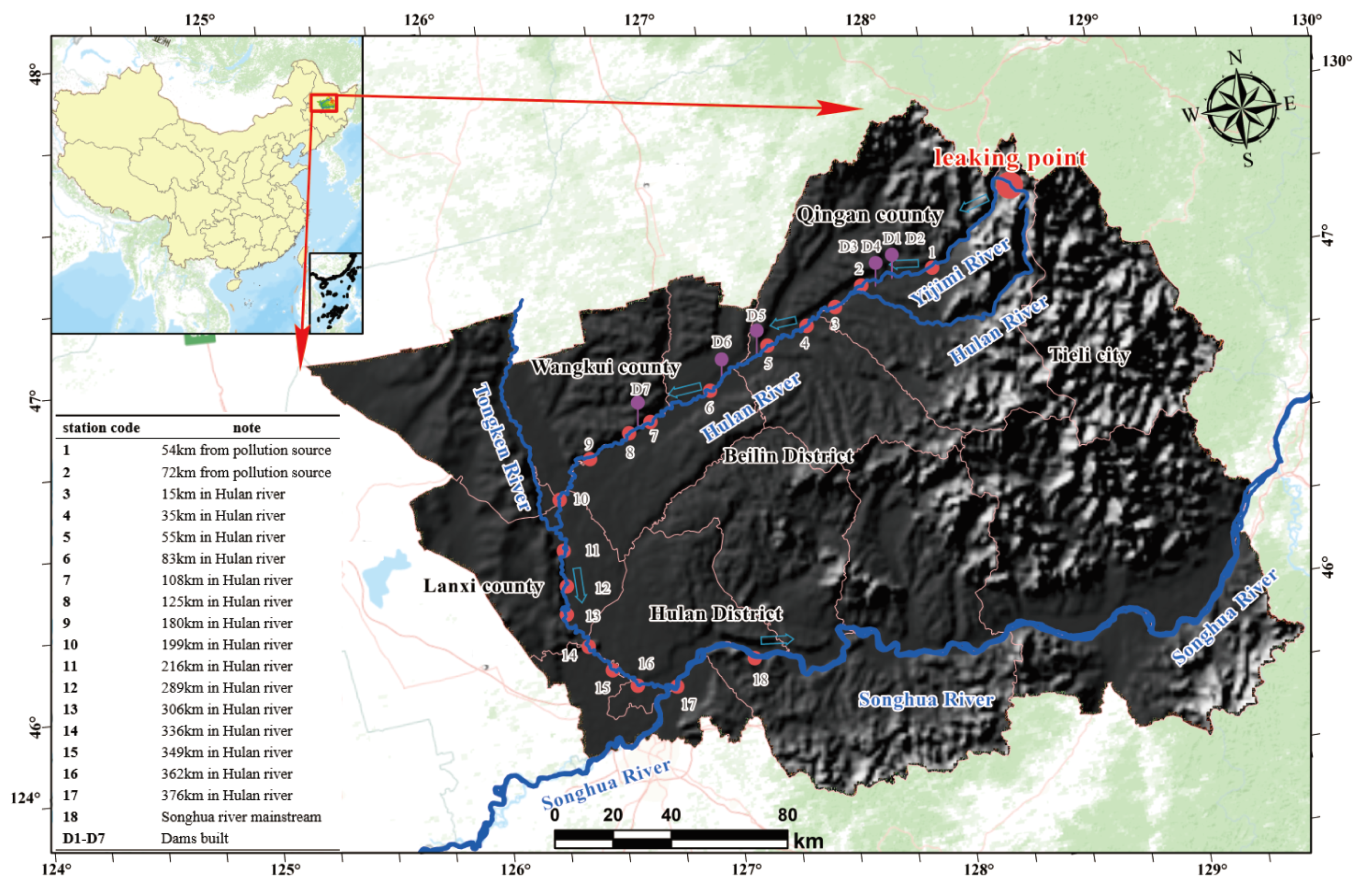
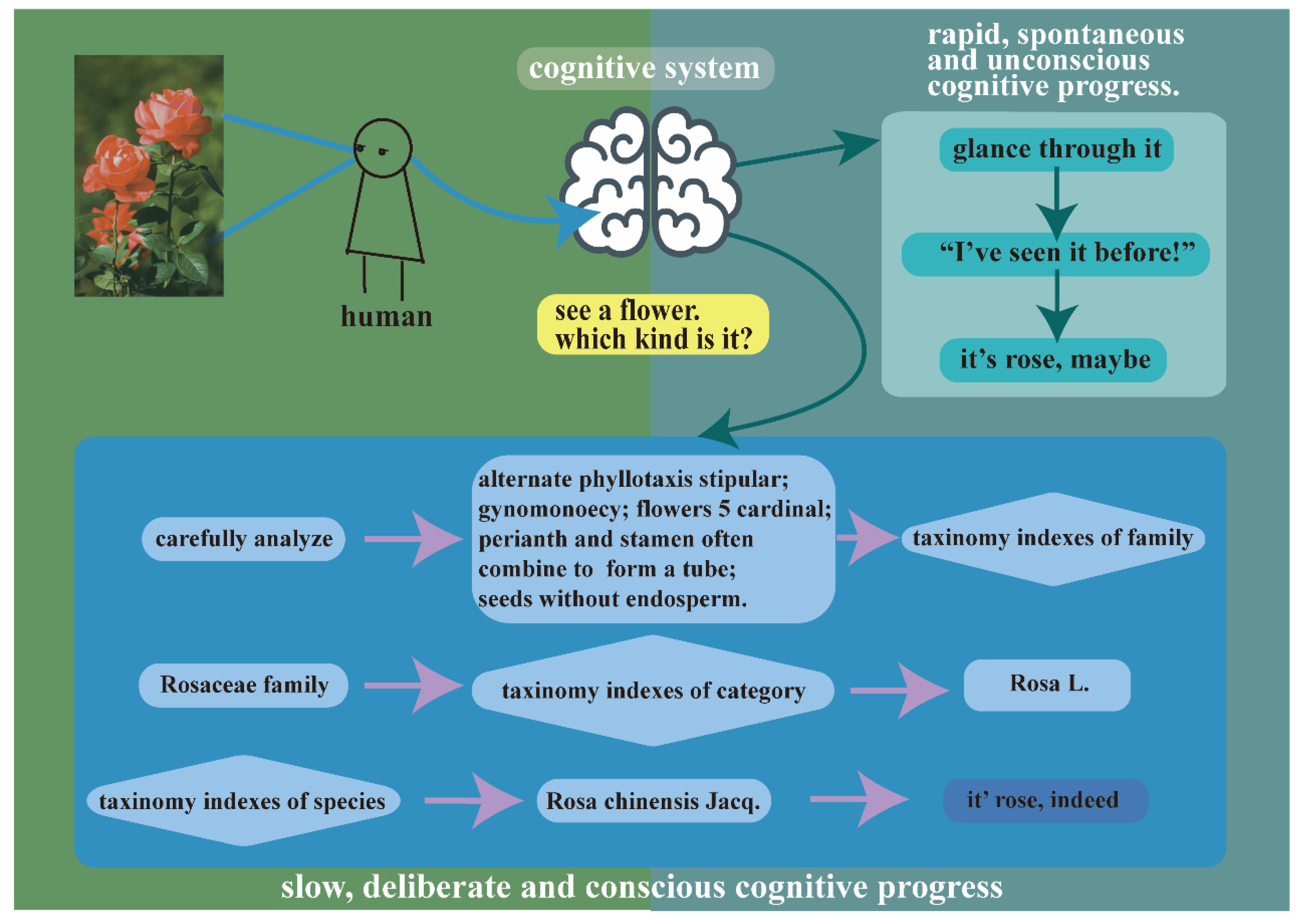
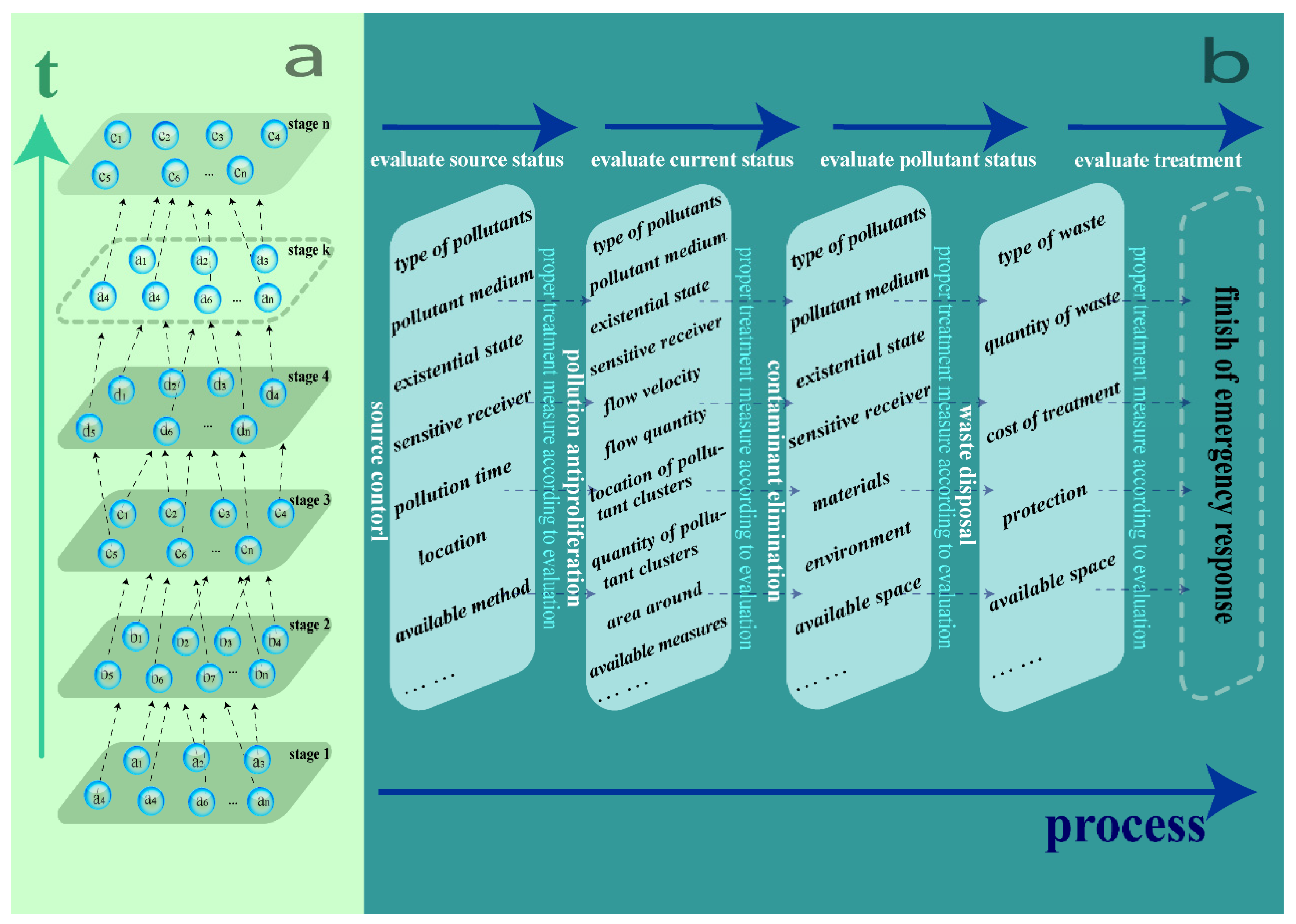
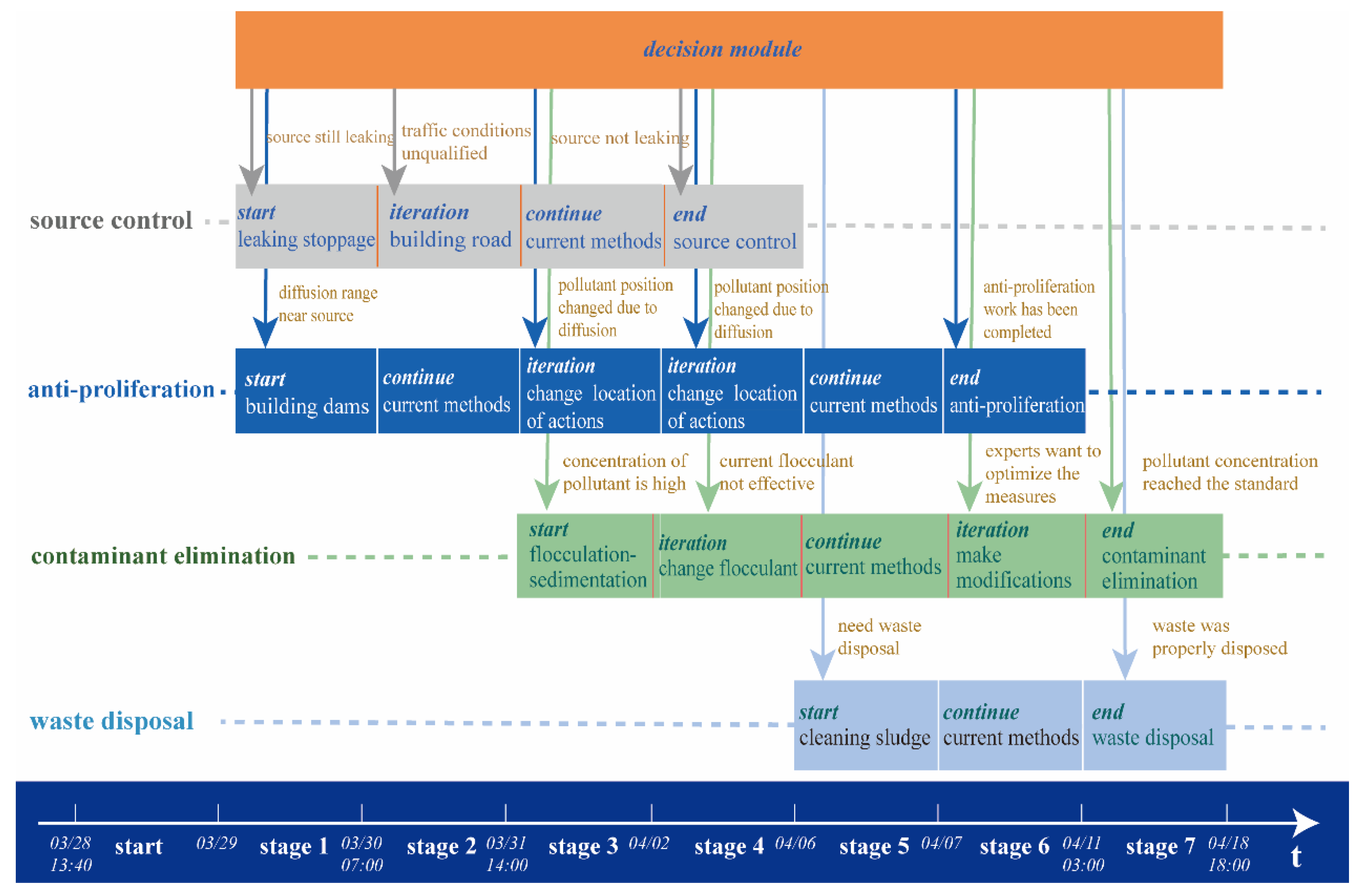
| Source Control | Pollutant Anti-Proliferation | Contaminant Elimination | Waste Disposal |
|---|---|---|---|
| Type of pollutant | Type of pollutant | Type of pollutant | Type of waste |
| Pollution medium | Pollution medium | Pollution medium | Quantity of waste |
| Existential state | Existential state | Existential state | Cost of treatment |
| Sensitive receiver | Sensitive receiver | Sensitive receiver | Protection |
| Pollution time | Flow velocity | Materials | |
| Location | Quantity of flow | Environment | |
| Toxicity | Location of contamination cluster | Available place | |
| Weather | Quantity of pollution cluster | Weather | |
| Damaged container | Area flows through | ||
| Measures can be taken | Measures can be taken |
| Judgment Indicators | Corresponding Data | Explanation |
|---|---|---|
| time difference between the occurrence and current time and event | input data here based on the situation | input data here based on the situation |
| the current pollution scope and development state | ||
| pollution severity | ||
| current pollution source leakage state | ||
| concentration | ||
| state of proliferation | ||
| if waste disposal is needed | ||
| modules can be chosen |
| Source Control | Pollutant Anti-Proliferation | Contaminant Elimination | Waste Disposal | |
|---|---|---|---|---|
| starting criteria | Judged by decision module (start) | Judged by decision module (start) | Judged by decision module (start) | Judged by decision module (start) |
| iteration criteria | the traffic condition | the flow rates of inflow and outflow rivers | reduction of pollutant concentration | Sufficient engineering facilities |
| the engineering parameters of dams | the traffic condition | if there are sufficient medicals | ||
| ecological risks of sensitive receptors | flow velocity and quantity | the flow rates of inflow and outflow rivers | ||
| ecological risks of sensitive receptors | flow velocity and quantity | |||
| ecological risks of sensitive receptors | ||||
| ending criteria | source does not continue to leak | anti-proliferation work completed | pollutant concentration reach the standard | waste properly disposed |
| the leakage amount is small | pollutant concentration reach the standard |
| Event | Treatment Measures | |||
|---|---|---|---|---|
| E14 | Leaking stoppage | Construction dam | Adsorption | Secure landfill |
| E1 | Closure of pollutant discharge | Activated carbon adsorption | Coprecipitation method | |
| E12 | Closure of pollutant discharge | Adsorption | ||
| E13 | Dig trenches | Covering/adsorption | Municipal wastewater treatment |
Publisher’s Note: MDPI stays neutral with regard to jurisdictional claims in published maps and institutional affiliations. |
© 2021 by the authors. Licensee MDPI, Basel, Switzerland. This article is an open access article distributed under the terms and conditions of the Creative Commons Attribution (CC BY) license (https://creativecommons.org/licenses/by/4.0/).
Share and Cite
Zhao, Y.; Pan, Y.; Wang, W.; Guo, L. A Brain-Inspired Dynamic Environmental Emergency Response Framework for Sudden Water Pollution Accidents. Water 2021, 13, 3097. https://doi.org/10.3390/w13213097
Zhao Y, Pan Y, Wang W, Guo L. A Brain-Inspired Dynamic Environmental Emergency Response Framework for Sudden Water Pollution Accidents. Water. 2021; 13(21):3097. https://doi.org/10.3390/w13213097
Chicago/Turabian StyleZhao, Ying, Yilin Pan, Wensong Wang, and Liang Guo. 2021. "A Brain-Inspired Dynamic Environmental Emergency Response Framework for Sudden Water Pollution Accidents" Water 13, no. 21: 3097. https://doi.org/10.3390/w13213097
APA StyleZhao, Y., Pan, Y., Wang, W., & Guo, L. (2021). A Brain-Inspired Dynamic Environmental Emergency Response Framework for Sudden Water Pollution Accidents. Water, 13(21), 3097. https://doi.org/10.3390/w13213097





